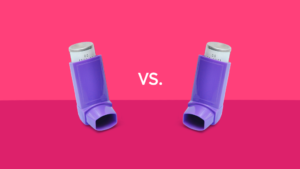What Is a Normal Blood Sugar Level Immediately After Eating? Managing Blood Sugar Spikes
HOME | DIABETES EDUCATION | WHAT IS A NORMAL BLOOD SUGAR LEVEL IMMEDIATELY AFTER EATING?
Normal blood sugar levels immediately after eating are crucial for health. Understanding these levels is vital. Let’s delve into the intricacies of post-meal blood sugar and its importance to overall well-being.
Key Takeaways
- Normal blood sugar level after eating is below 140 mg/dl for those without diabetes
- For most individuals, blood sugar level should be below 180 mg/dl two hours after a meal
- Consistently high blood sugar levels after eating may indicate the need for adjustments in medication or lifestyle habits
- Regular monitoring of post-meal blood sugar levels is crucial for managing diabetes effectively and preventing complications
Understanding Normal Blood Sugar Levels
Normal blood sugar levels depend on individual factors and the timing of measurements. For those without diabetes, a normal blood sugar level after eating is below 140 mg/dl. However, for most individuals, it should be below 180 mg/dl two hours post-meal. These levels can fluctuate throughout the day. People with diabetes may have different target ranges based on their treatment plan.
Consistently high blood sugar levels after eating may indicate the need for adjustments in medication or lifestyle habits. It’s crucial for people with diabetes to work closely with healthcare professionals to manage and monitor their blood sugar levels effectively. Regular blood sugar tests help in understanding individual patterns and avoiding blood sugar spikes or low sugar episodes.
Factors Affecting Post-Meal Blood Sugar
Factors influencing post-meal blood sugar levels are carbohydrates and insulin. Carbohydrates, when consumed in a meal, are broken down into glucose, leading to a rise in blood sugar levels. High-carb meals can cause blood sugar spikes, impacting overall glucose levels.
Proper timing of insulin administration and individual insulin-to-carb ratio are crucial in managing post-meal blood sugar levels. Insulin aids glucose entry into cells for energy, lowering blood sugar levels. Calculating the right insulin amount based on carb intake helps maintain normal blood sugar levels. Understanding these factors is essential for diabetes care to prevent high blood sugar levels and related complications.
Importance of Post-Meal Blood Sugar Test
Post-Meal Blood Sugar Test Importance
Monitoring blood sugar levels after meals is crucial for managing diabetes effectively and making informed choices about diet and lifestyle. After eating, glucose levels rise, and a post-meal blood sugar test allows measurement at this crucial time. This test provides valuable information about how the body processes food and helps understand the impact of different meals on blood sugar levels.
Checking blood sugar after meals can identify high or low blood sugar patterns, enabling necessary adjustments to medication or lifestyle. This proactive approach can help prevent complications associated with poorly managed blood sugar levels, such as cardiovascular diseases and nerve damage. The post-meal blood sugar test is essential for effective diabetes management.
Monitoring High Blood Sugar Levels
To manage high blood sugar levels after eating, regularly monitor blood sugar, and make necessary adjustments to lifestyle and medication. When monitoring high blood sugar levels, it is important to:
- Test blood sugar levels regularly, especially after meals, to track fluctuations and identify patterns.
- Note symptoms of high blood sugar such as increased thirst, frequent urination, fatigue, and blurred vision.
- Aim to achieve and maintain blood sugar targets set with your healthcare professional, typically below 180 mg/dL two hours after a meal.
A blood sugar target is the range you try to reach as much as possible. These are typical targets:
- Before a meal: 80 to 130 mg/dL.
- Two hours after the start of a meal: Less than 180 mg/dL.
Your blood sugar targets may be different depending on your age, any additional health problems you have, and other factors. Be sure to talk to your health care team about which targets are best for you.
https://www.cdc.gov/diabetes/managing/manage-blood-sugar.html#:
Symptoms of High Blood Sugar
Increased thirst, frequent urination, fatigue, blurred vision, slow-healing sores, unexplained weight loss, and frequent infections indicate high blood sugar levels. Measure blood glucose levels to monitor symptoms. Post-meal blood sugar time, fasting blood sugar levels, and normal blood sugar levels are important indicators.
High blood sugar levels can lead to complications. Measure blood sugar levels in time and take necessary actions to manage and prevent high blood sugar. Consulting with healthcare providers to personalize treatment plans can aid in preventing high blood sugar symptoms.
Managing Post-Meal Blood Sugar
Managing Post-Meal Blood Sugar
How can you effectively manage your blood sugar levels after eating to maintain optimal health and prevent long-term complications? To manage your blood sugar levels after eating, consider the following strategies:
- Test your blood sugar at specific times: It’s essential to test your blood sugar at specific times, such as before meals, and two hours after meals, to understand how your body responds to different foods and make necessary adjustments.
- Keep track of your blood sugar levels: Maintaining a record of your blood sugar levels in a blood sugar chart can help you and your healthcare professional identify patterns and make informed decisions about your diet and medication.
Impact of Diet on Blood Sugar Spikes on Type 1 Diabetes
The diet significantly impacts blood sugar spikes in individuals with type 1 diabetes, influencing the management of their condition and long-term health outcomes. The table below outlines the impact of diet on blood sugar spikes over time for individuals with type 1 diabetes, emphasizing the importance of managing blood sugar levels:
| Impact of Diet on Blood Sugar Spikes Over Time | Manage Blood Sugar Time | Blood Glucose Levels Time |
|---|---|---|
| Fasting Blood Sugar | Morning | Before and After Meals |
| Type 1 Diabetes – Times | Throughout the day | During Exercise |
| Insulin Levels – Times | Before Meals | After Meals |
| Blood Sugar Spikes Time | Post-Meal | Overnight |
Understanding how different foods affect blood sugar levels and making necessary adjustments to the treatment plan are crucial for maintaining optimal blood glucose readings. By managing blood sugar over time, individuals can mitigate the risk of high and low blood sugar, promoting better long-term health outcomes.
Recognizing Unbalanced Blood Sugar Levels for People with Diabetes
Blood Sugar Level Recognition:
Understanding the normal blood sugar levels for people with diabetes is crucial. Generally, it should be below 180 mg/dL two hours after a meal. Be vigilant of blood glucose spikes after eating as they can lead to long-term complications if not managed properly. Regularly measuring blood sugar, especially after meals, is essential to ensure it stays within the recommended range.
Dealing With High or Low Blood Sugar
Dealing With High or Low Blood Sugar
Understanding normal blood sugar levels is crucial for effective management. It is important to recognize signs and symptoms of high and low blood sugar and take proactive steps to address them. Regularly measuring blood sugar levels after eating is essential to ensure they stay within the recommended range. Symptoms of high blood sugar, such as increased thirst or fatigue, must be addressed promptly.
Similarly, signs of low blood sugar, like shaking or sweating, require immediate action. Factors influencing blood sugar levels after eating include the type and amount of carbohydrates consumed, timing of insulin administration, and physical activity. Monitoring and managing these factors can effectively prevent complications associated with high or low blood sugar levels.
Seeking Medical Advice for Blood Glucose Levels
If you consistently experience high or low blood glucose levels after eating, consult healthcare professionals to discuss your blood sugar times and develop a personalized plan for blood sugar control. Monitor your blood sugar levels at different times of the day, including before and after meals, to provide comprehensive data for assessment.
It’s crucial to measure your blood sugar levels regularly and seek guidance if your levels consistently fall outside the healthy blood sugar levels range. Seeking medical advice for blood glucose levels can lead to better management and overall well-being.
Frequently Asked Questions
How High Should Your Blood Sugar Be Right After Eating?
After eating, blood sugar should be less than 140 mg/dl. It’s crucial to monitor these levels as they can vary throughout the day. Collaborating with a healthcare professional is vital for effective management.
What Is a Normal Blood Sugar Level Immediately After Eating Non Diabetic?
After eating, a normal blood sugar level for non-diabetics is typically less than 140 mg/dl. It’s crucial to collaborate with a healthcare professional to effectively manage and monitor your levels, as they can fluctuate throughout the day.
What Is a Normal Prediabetes Level After Eating?
A normal blood sugar level for prediabetes after eating is typically less than 180 mg/dl. It’s important to monitor and manage your levels. Making healthy lifestyle choices can help keep your blood sugar in check.
What Is Considered Low Blood Sugar After a Meal?
After a meal, low blood sugar is typically considered to be below 70 mg/dl. It’s important to monitor your levels and consult a healthcare professional if you consistently experience low blood sugar after eating.



